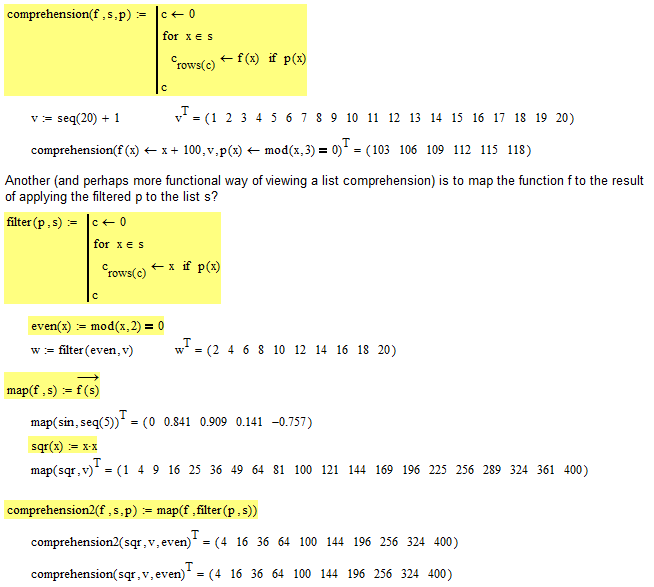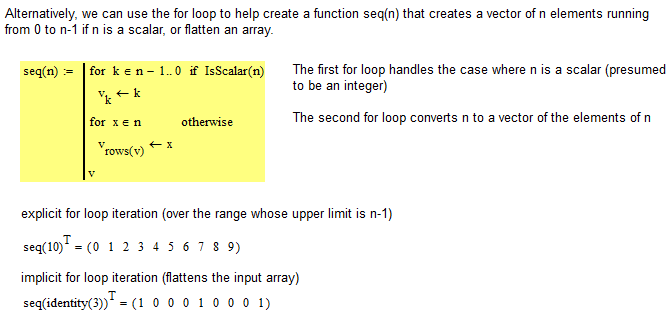Community Tip - Have a PTC product question you need answered fast? Chances are someone has asked it before. Learn about the community search. X
- Subscribe to RSS Feed
- Mark Topic as New
- Mark Topic as Read
- Float this Topic for Current User
- Bookmark
- Subscribe
- Mute
- Printer Friendly Page
How to enter domain and range?
- Mark as New
- Bookmark
- Subscribe
- Mute
- Subscribe to RSS Feed
- Permalink
- Notify Moderator
How to enter domain and range?
How are you supposed to enter domain and range in Mathcad? (I'm currently using Mathcad Prime 2.x).
Kind regards,
Michael
- Mark as New
- Bookmark
- Subscribe
- Mute
- Subscribe to RSS Feed
- Permalink
- Notify Moderator
To elaborate a bit: I'm trying to use set builder notation with a vertical bar to denote a domain, but without much luck. I managed to do something with charmap, i.e.
D(f)={x in R | x<3}
Vertical bar in Tahoma is U+007C - is there a way to enter this without opening charmap, select and copy it?
I've considered writing the set builder notation in text. But then I can't write D(f<subscript 1>) = ...
I've considered writing the set as an equation with the big fat equal sign. But then I ...
Maybe I'll have to go back to MS Word, write the set there and then copy and paste it as a picture.
- Mark as New
- Bookmark
- Subscribe
- Mute
- Subscribe to RSS Feed
- Permalink
- Notify Moderator
Michael Jenner wrote:
To elaborate a bit: I'm trying to use set builder notation with a vertical bar to denote a domain, but without much luck. I managed to do something with charmap, i.e.
D(f)={x in R | x<3}
Vertical bar in Tahoma is U+007C - is there a way to enter this without opening charmap, select and copy it?
I've considered writing the set builder notation in text. But then I can't write D(f<subscript 1>) = ...
I've considered writing the set as an equation with the big fat equal sign. But then I ...
Maybe I'll have to go back to MS Word, write the set there and then copy and paste it as a picture.
I don't think there is a specific way that you can signifiy domain and range within Mathcad.
I've had a look through Help and I can't see any mention of the old Mathcad (15 and below) method of entering general characters as part of a name (ctl-shft-k).
If you intend to use | multiple times in a document, then the easier way may be to enter it once using U+007C and then copy it from Prime when you next need it.
If it's of any help, I've written a simple list comprehension function in Mathcad 15, which should work in Prime (I'm not at my Prime PC at the moment, so can't check, but I'm reasonably confident that they do work in Prime). There ought to be a similar feature built in to Prime but I can't see that happening any time soon.

The function seq is just a simple integer sequence generator function. Here's one of the several variants I play around with.

Stuart





